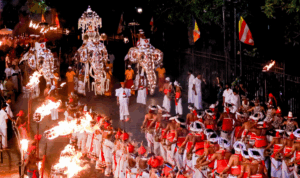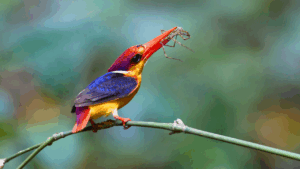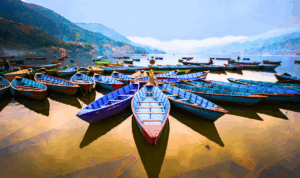From snow-draped Himalayan ridges to sunlit tropical coasts, South Asia is a land where landscapes change as dramatically as the creatures that inhabit them. Elephants march across dusty forests, storks turn wetlands into paradise, dolphins surface in shimmering lagoons, and Tahrs graze calmly at the edge of the sky. Beyond the big cats, South Asia has an enchanting variety of fauna spread across its diverse landscapes that create a memorable wildlife experience for you. Find out more in this blog.
India
Greater One-Horned Rhinoceros 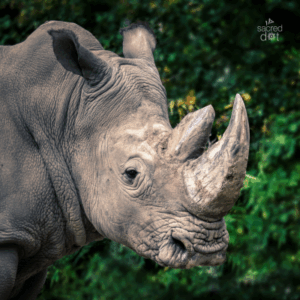
In the misty floodplains of Kaziranga National Park in Assam, the Greater One-Horned Rhinoceros lumbers about like a prehistoric tank that somehow wandered into the 21st century. Its thick, armor-plated hide makes it look ready for battle, yet most of the time it’s peacefully munching on grass or wallowing in mud like it’s at a day spa. Sharing the grasslands are swamp deer, wild buffalo, and countless birds, all moving in a quiet choreography as the Brahmaputra River winds its way past. Watching a rhino emerge through morning fog feels like time travel, minus the dinosaurs. Just don’t be fooled by their relaxed pace. When they charge, it’s like a freight train barrelling straight at you.
- Best time to visit: November – April
Olive Ridley Turtles 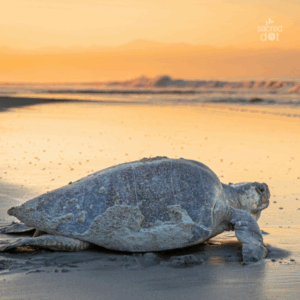
On Odisha’s coast, nights turn ancient. From December to March, Olive Ridley Turtles return to Gahirmatha, Rushikulya, and the Devi River mouth. Their shells gleam like bronze shields scattered on the sand. Females dig with patient rhythm, carving cradles into the earth. Weeks later, the beaches erupt again—tiny hatchlings racing to the waves, drawn by moonlight. Most vanish into the deep. A few survive. Decades later, they return to the same shores, repeating the rhythm of birth, sea, and home. Not far away stand Odisha’s great monuments—the Sun Temple at Konark and the Jagannath Temple at Puri. Together with the turtles, they tell a single story: time moves, yet it always returns.
Best time to visit: December – March
Painted Stork 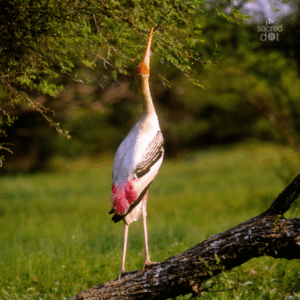
When winter arrives at Keoladeo Ghana National Park in Bharatpur, Rajasthan, the wetlands transform into a grand stage for migrating birds. Among the brightest performers are the Painted Storks, tall and elegant, with coral-pink wing plumes that look like brushstrokes on a watercolor canvas. They stand in groups, dipping their long yellow bills into shallow pools with the focus of seasoned fishermen. The air is thick with movement — pelicans, geese, cranes, and ducks flapping, circling, landing. Yet the storks, patient and dignified, hold their place in the spectacle. And when hundreds of them rise into the air together, the sky looks as though someone spilled color across it.
- Best time to visit: November – February
Blackbuck 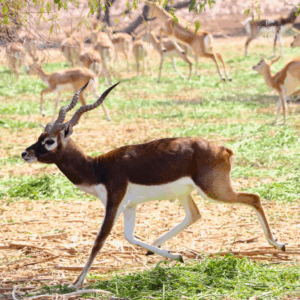
In the grasslands fringing Ranthambore National Park in Rajasthan, the Blackbuck adds a touch of elegance to a landscape better known for its tigers. These antelope are masters of pronking — leaping in high, graceful arcs like an expert gymnast. Males, with twisted spiraled horns and glossy dark coats, gather harems of females and strut about like conceited aristocrats. At sunrise, when the herds bound together against the backdrop of Ranthambore’s ancient forts, the scene feels like a living painting.
- Best time to visit: October – March
Irrawaddy Dolphins 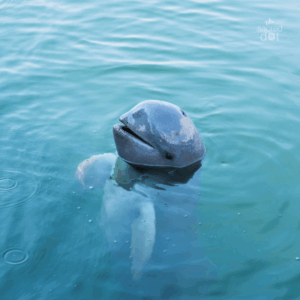
On the silver expanse of Chilika Lake in Odisha, the water seems still — until a rounded head pops up, exhales with a soft puff, and disappears again. That’s the Irrawaddy Dolphin, one of the lagoon’s shyest and most endearing residents. Unlike their ocean cousins, these dolphins don’t leap or perform tricks. Instead, they appear quietly in small groups, rolling just enough to tease you before vanishing again. Their playful yet elusive nature turns every sighting into a reward for patience. All around, flocks of migratory birds like flamingos, pelicans, and gulls, gather in staggering numbers, turning Chilika into a stage where dolphins and birds share the spotlight.
- Best time to visit: October – March
Indian Chevrotain 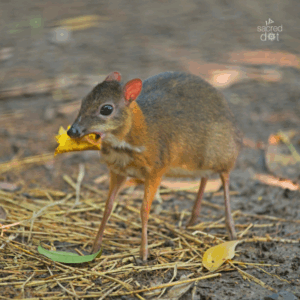
In the tangled undergrowth of Periyar Tiger Reserve in Kerala, the Indian Chevrotain, or Mouse Deer, makes its secretive rounds. Barely bigger than a rabbit, it is the world’s smallest hoofed mammal. It moves with quick, nervous steps as though the whole forest might be watching. Strictly nocturnal, it ventures out after dusk to forage near streams, and at the faintest sound it either freezes like a statue or bolts into the bushes. To see one is rare enough that it feels like stumbling upon a hidden character in the jungle’s night drama. Despite its tiny frame, the chevrotain has endured for millions of years.
Best time to visit: November – March (cool, dry months when night treks in Periyar are most rewarding)
Nepal
Himalayan Tahr 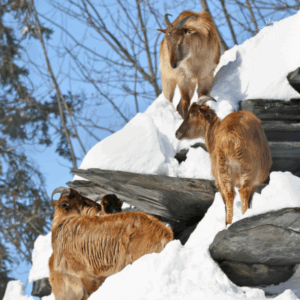
On the steep cliffs of Sagarmatha and Annapurna in Nepal, the Himalayan Tahr defies gravity. Stocky, shaggy-coated, with curved horns, they move across sheer rock faces as if glued to the mountain. From a distance they resemble goats, but up close they look like mountaineers in fur coats, built perfectly for this icy realm. Seeing a herd grazing on alpine slopes, framed by the backdrop of Everest or Annapurna, is both humbling and surreal. Somewhere in the shadows, the snow leopard watches them too, turning the high pastures into a silent drama of predator and prey.
- Best time to visit: October – May
Bhutan
Black-Necked Crane 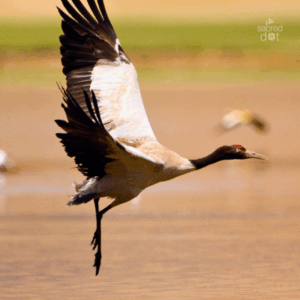
Every winter, the wide valley of Phobjikha in Bhutan echoes with the calls of the Black-Necked Crane. Tall and elegant, with black-and-white plumage and a red crown, they descend in flocks from Tibet, filling the fields with movement. Revered as sacred birds, they are welcomed by locals who celebrate their arrival with prayers, festivals, and butter lamps. Watching them dance — wings spread, heads bobbing in unison — feels almost ceremonial. As if the birds themselves are blessing the land.
Best time to visit: November – February
Himalayan Monal 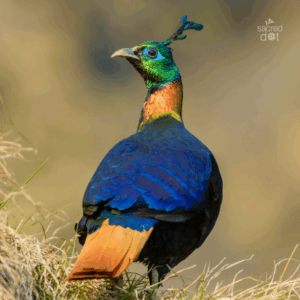
In the rhododendron forests of Bhutan, the Himalayan Monal brings sudden flashes of color. Its iridescent plumage — emerald, sapphire, copper, and crimson — glitters in the light, making it look more like a jewel than a bird. It struts and digs at the forest floor for roots and insects, its flamboyant feathers catching even the slightest sunbeam. And just as quickly as it appeared, it vanishes back into the undergrowth, leaving only a shimmer of color in your memory. It’s no wonder the monal is treasured as Bhutan’s national bird.
- Best time to visit: March – May
Sri Lanka
Blue Whale 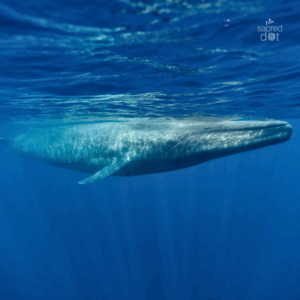
Far out in the Indian Ocean off Mirissa and Trincomalee in Sri Lanka, the water swells, and suddenly the back of a Blue Whale breaks the surface. A misty spout shoots into the air, catching the light, before the world’s largest creature — bigger than any dinosaur — slips quietly back into the depths. For a few seconds, the ocean feels smaller, and you feel wonderfully insignificant. Watching these giants glide through tropical waters is one of Sri Lanka’s most humbling spectacles, a reminder that the sea still holds mysteries too vast to grasp.
- Best time to visit: November – April
Asian Elephant 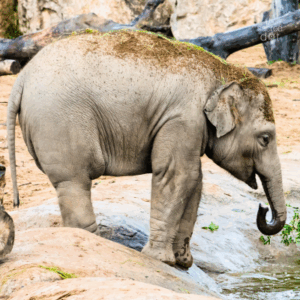
In Minneriya National Park in Sri Lanka, the dry season brings one of nature’s grandest gatherings. Hundreds of Asian Elephants converge at shrinking waterholes, their herds mingling as calves splash clumsily in the mud while older elephants bathe and graze. It is a spectacle of both power and tenderness — trumpets, rumbles, and dust rising as families greet each other. Standing before this congregation, you realize the word “gathering” doesn’t quite capture the scale; it’s more like an ancient council of giants.
- Best time to visit: July – September
Slender Loris 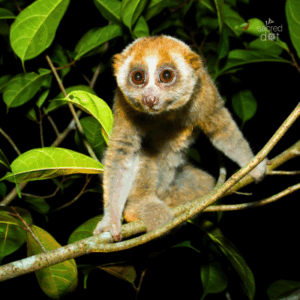
As night falls over the forests of Sri Lanka, the Slender Loris awakens. Tiny, with enormous eyes that glow in torchlight, it creeps along branches with the precision of a tightrope walker. Its bug-eyed stare makes it look perpetually startled — though in truth, it is simply cautious, scanning for insects in the dark. Rarely seen, the loris is like a little ghost of the canopy, a reminder that the jungle doesn’t sleep when the sun goes down — it only changes cast.
- Best time to visit: December – April
From rhinos that resemble armored tanks to lorises with eyes like lanterns, South Asia’s wildlife is as diverse as its landscapes. Some encounters inspire awe, others spark a smile, and many do both at once. In India, Nepal, Bhutan, and Sri Lanka, the wild is not just something you see — it’s something you feel, fleeting yet unforgettable, carried with you long after the journey ends. Are you ready to witness it for yourself? Plan your journey with Sacred Dot, and let us craft experiences that bring you closer to the wild heart of South Asia.


